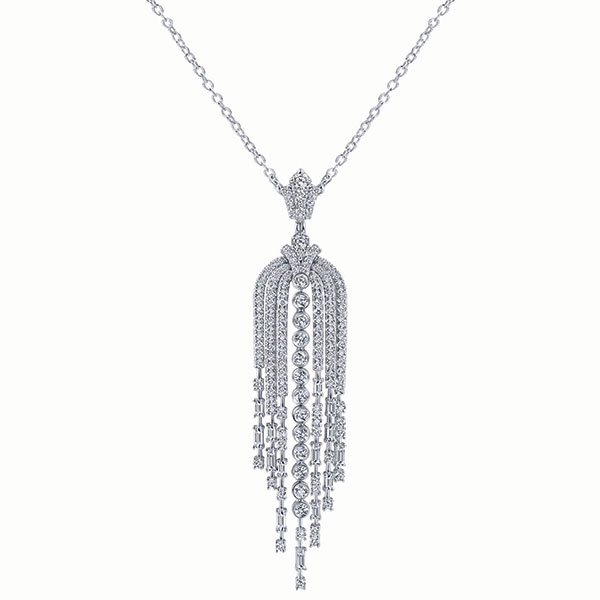
Gabriel & Co.’s Jack and Dominick Gabriel have built a jewelry brand founded on values they acquired in their native Lebanon
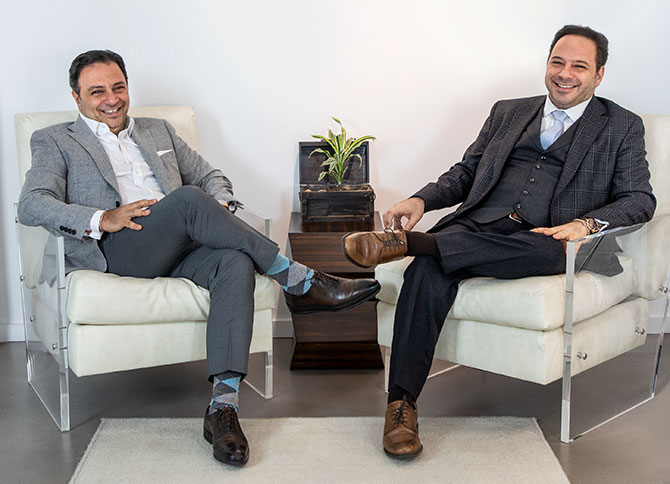
When Dominick Gabriel arrived in America from war-torn Lebanon in 1983, he was 13 years old and spoke no English. “Very difficult,” he says now of settling down in suburban Long Island, where his fluency in Arabic, French, and Turkish didn’t matter very much.
Fortunately, he was part of a strong and loving family led by his father, jeweler Elias Gabriel, who followed Dominick and older brother Jack to the United States from Beirut a year later. By 1987, Elias had set up a small shop offering distinctive pieces and first-class customer service, with his sons behind the counter. Two years after that, Jack and Dominick (pictured above) felt ready to open their own wholesaling business in Manhattan’s Diamond District.
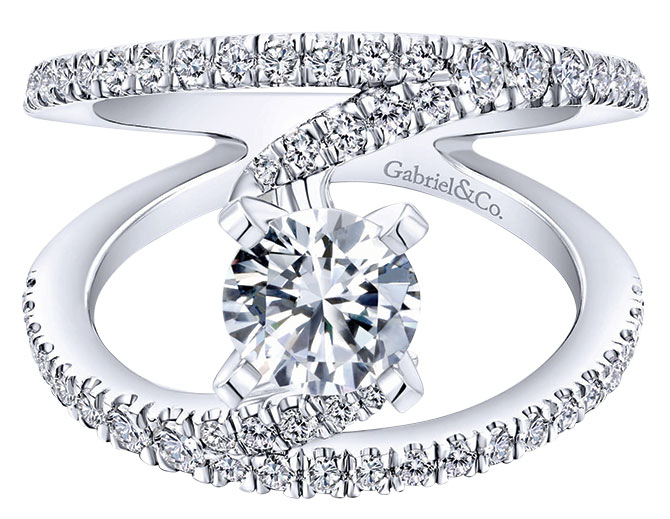
An inspiring immigrant success story? Definitely. But the Gabriel brothers surpassed even their wildest expectations on the road to celebrating their company’s 30th anniversary this fall. Gabriel & Co. has evolved into one of the country’s leading makers of fine jewelry, named “best-performing brand” numerous times by the 1,200 retailers who carry the line. Thanks to Dominick’s design and sales expertise and Jack’s focus on finance, this family-owned business flourished by combining fine craftsmanship and accessible prices, offering multiple collections of diamond-encrusted bracelets, earrings, necklaces, and rings set mostly in white, yellow, and rose gold.
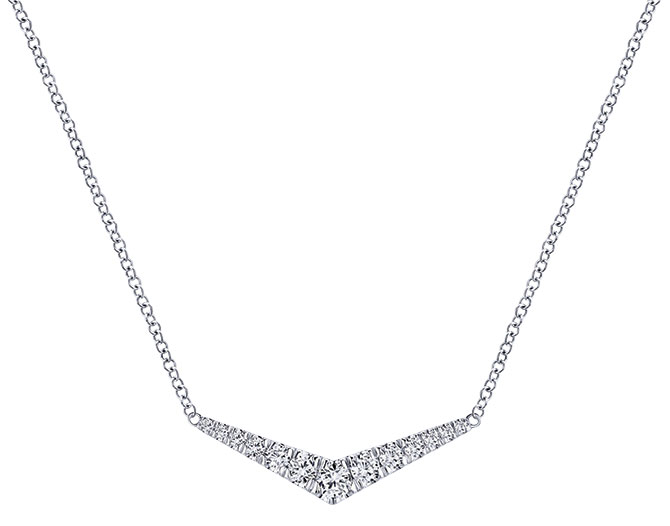
“Two brothers with completely different personalities, creating a successful business that we are passionate about in different ways—the odds of that happening are rare,” says Dominick, seated next to Jack in the company’s New York City headquarters, a full floor in a West Side commercial building with a striking glass-box showroom in the center. Similarly dressed in white shirts under gray vests, the brothers speak teasingly about each other’s strengths. “You give me a problem, and I add everything up in my head,” Jack says. “The dots have to connect for it to make sense.” Gesturing to Dominick, he adds, “He looks at the big picture.”
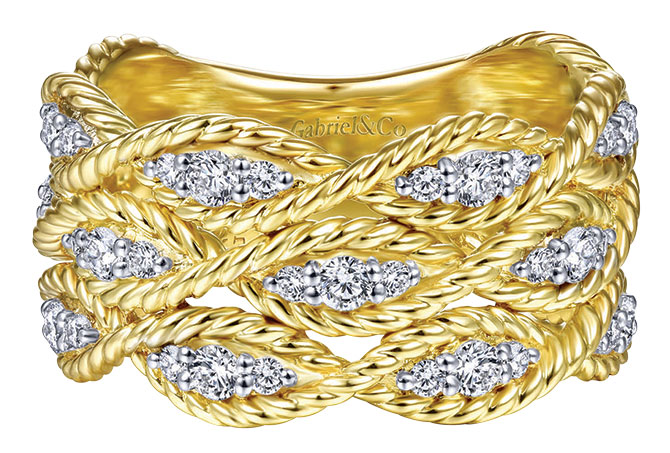
Responds Dominick: “Let’s put it this way. In every company, you need creative and you need operations, and he pushes me by asking questions. Why are we designing certain products? How should we partner with retailers? Most designers don’t have an older brother like Jack Gabriel asking, ‘Why? How?’ That process helps our merchandising become more consumer-centric.”
Jack’s fondness for the Socratic method meshed perfectly with Dominick’s hunger to figure out the likes and dislikes of jewelry customers. The designer’s aha moment came when he stumbled upon the Myers-Briggs personality test online. Fascinated by the quiz’s combinations of traits (introversion versus extroversion; thinking versus feeling), he sketched out five jewelry personalities: Urban Sophisticated (think Audrey Hepburn), Fresh and Free-Spirited (Kate Hudson), Modern Romantic (Amy Adams), Casual Cool (Hailee Steinfeld), and New Horizon Seeker (Lupita Nyong’o). By zeroing in on a client’s style, Gabriel retailers could suggest appropriate pieces from the company’s extensive product lines.
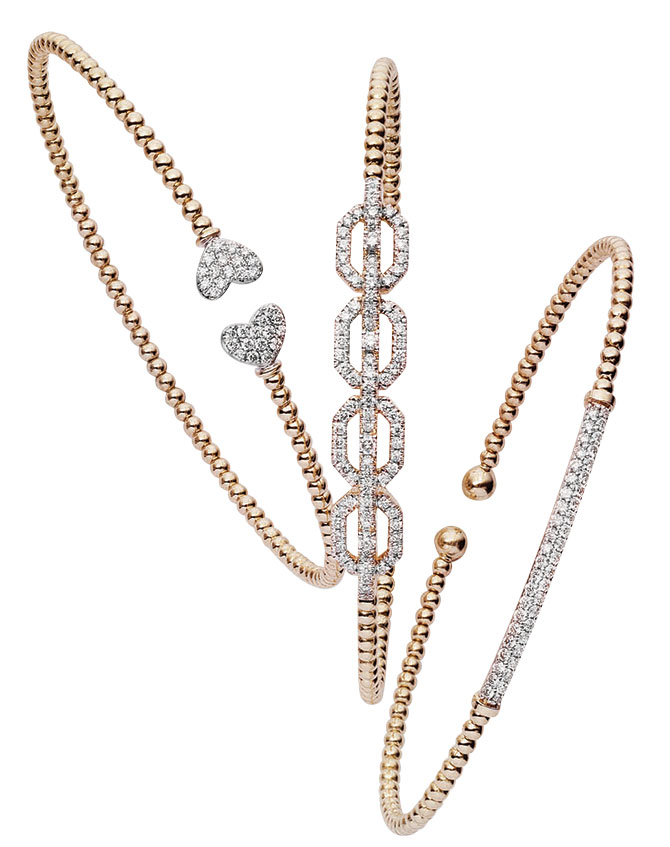
As chief design officer, Dominick decides on overall themes for the yearly collections and sketches ideas that are interpreted by an in-house design team. From some 2,000 potential designs, 500 pieces a year are introduced, many of them refined in response to comments from Gabriel & Co.’s whopping 5 million Facebook followers and 400,000 Instagram followers. The company embraced social media early on, when most brands didn’t understand how to use it as a marketing tool, says Dominick, who favors targeted posts to different sectors of his audience and uses feedback to tweak collections including Amavida (black-tie fine jewelry) and Bujukan (youthful designs, such as cute stackable bangles).
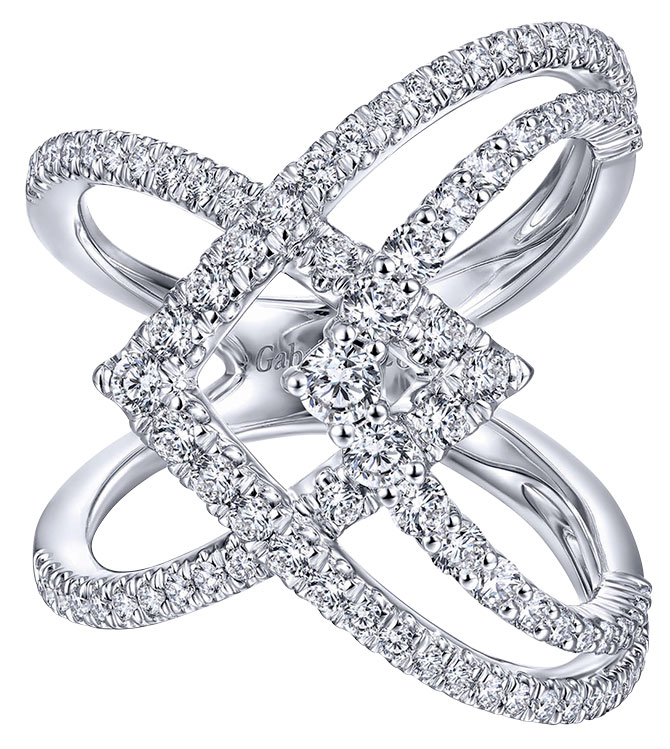
Opening a display case in the showroom, Dominick points out a circular pavé-diamond drop earring. “This is conservative with a little edge,” he says, before picking up a sculptural hinged style. “This is edgier.” Every earring in the case is coated with tiny diamonds, prompting a discussion of quality-control procedures at the company’s facility in China’s Panyu manufacturing district, which opened in 2004. “We have five people in our factory with 150 years of [combined] experience who review every design, and if anything doesn’t meet production expectations, they kick it back,” Dominick says. “We hold ourselves to the highest standards.” Each piece comes with a lifetime warranty for manufacturing defects and a one-year warranty for wear and tear, “even if you drop it and step on it,” Dominick quips.

Boosting consumer confidence is Jack’s ingenious notion of engraving a unique serial number onto every item of Gabriel & Co. jewelry, whether it’s a $250 locket or a $15,000 ring. The numbering began as a way to hold the factory’s 400-plus workers accountable for the quality of each piece, but a happy byproduct has been the ability to track and return stolen items. The serial number is also linked to the provenance of the piece’s diamonds, all of which are ethically sourced.
Early on, the Gabriels decided not to sell their jewelry directly, preferring to reach consumers through partnerships with independent retailers. When e-commerce began growing, the company embedded a store locator into its website, allowing browsers to find a dealer near them. Local stores carry a selection of items in branded cases; if a particular bracelet offered online is not in stock, Gabriel will ship it directly to the customer and give the profit to the retailer. “We had the strength to merge the internet with brick-and-mortar,” says Jack, adding that the same principles apply to bridal jewelry, which now accounts for half of sales.
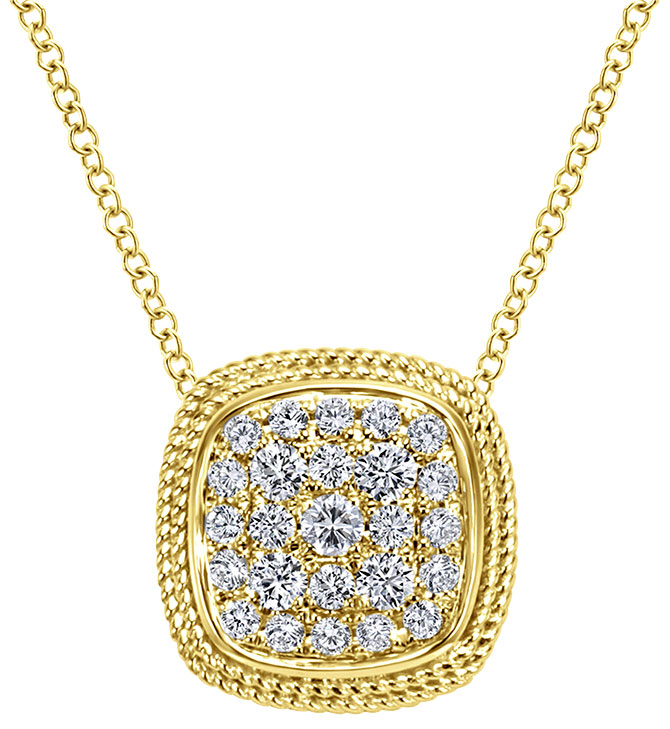
Speaking of bridal, Dominick admits that he found the category boring in the early years of the brothers’ business. He turned his attention to engagement rings as millennial brides became more adventurous in their choice of settings. “Ten years ago, God forbid you had negative space in an engagement ring,” he says in preface to a story about the company’s best-selling model, the Nova. Designed with a diamond-covered split shank cradling a center stone, the ring went viral when previewed on social media, before it was named or priced ($3,100 for the setting only; local dealers provide the center stone).
As their bridal business grew, Gabriel & Co. again stepped up to make sales easier for retail partners. For an investment of a few thousand dollars, the company provides 40 sample rings with cubic zirconia center stones to give customers a sense of how the finished product will look. Couples can even select two favorite ring designs on GabrielNY.com and make an appointment with a retailer to preview them free of charge.
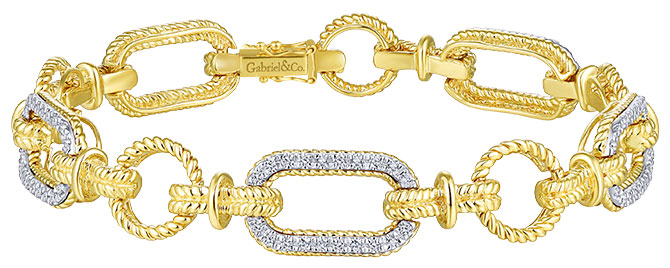
As they reflect on three decades in business together, Jack and Dominick Gabriel express satisfaction at having remained at the forefront of technology while honoring their father’s values of honesty, quality, and hard work. Elias Gabriel took great pride in his sons’ success and was able to visit their factory in China before his death in 2007.
“People have a connection with jewelry that goes up over time,” Dominick says. “The industry establishes value by the metal or the diamond, but we measure value by how much happiness and satisfaction a piece is going to give the wearer.”
Top: Art Moderne necklace with 3.16 cts. t.w. diamonds in 18k white gold; $10,815; Gabriel & Co.; 212-519-1400; gabrielny.com